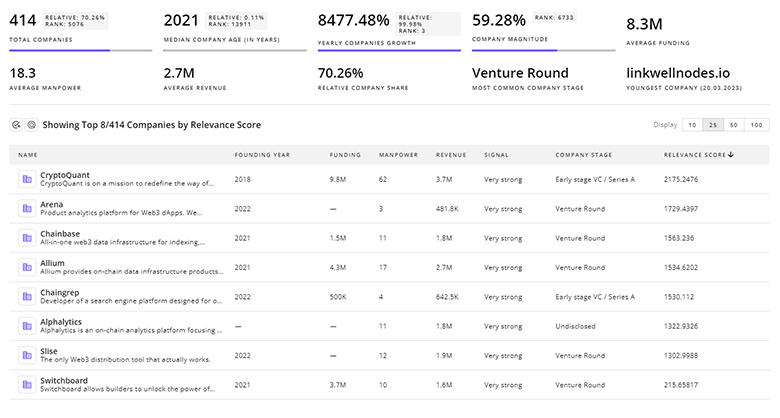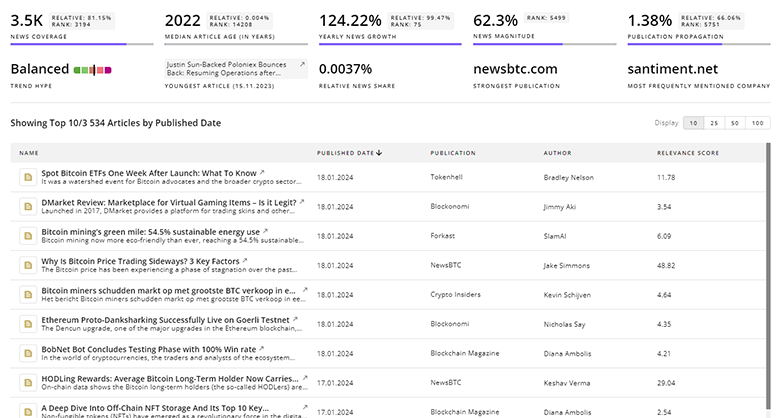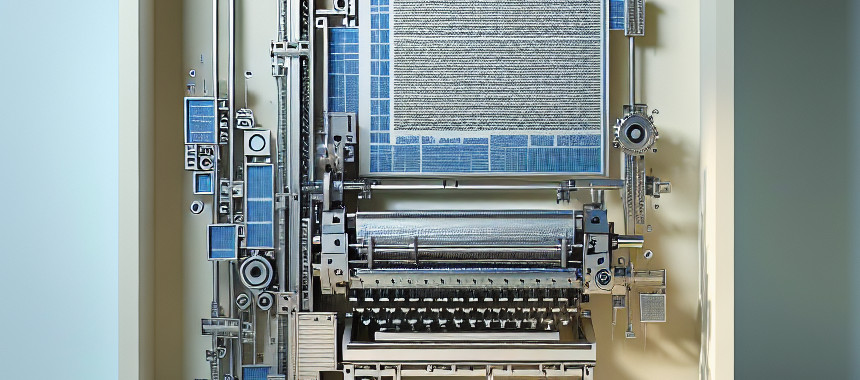
Packaging Design Report
: Analysis on the Market, Trends, and TechnologiesThe packaging design sector faces a clear inflection where strategic visual differentiation, sustainability, and digital production meet measurable market growth: the packaging design services market is expected to expand at a 4.7% CAGR through the coming decade, forcing design teams to balance material constraints, supply-chain cost pressures, and rapid digital workflows to win shelf and online moments. Industry forecasts place current global service market sizes in the tens of billions (for example, USD 30.51B in 2024) which, combined with e-commerce growth and demand for personalization, concentrates commercial value in short-run printing, prototyping, and sustainable-material solutions Packaging Design Service Market Research Report.
The last time we updated this report was 41 days ago. If there’s something missing or off, your tips are welcome!
Topic Dominance Index of Packaging Design
The Dominance Index for Packaging Design merges timelines of published articles, newly founded companies, and global search data to provide a comprehensive perspective into the topic.
Key Activities and Applications
- Brand-first packaging that converts at shelf and online — design teams create packaging to carry brand storytelling, increase perceived value, and drive purchase decisions through typography, tactile finishes, and structural cues.
- Structural engineering and protective design for e-commerce — optimizing carton right-sizing, protective inserts, and lightweight formats to reduce transit damage and shipping cost.
- Rapid prototyping and validation — 3D virtual mockups, additive manufacturing, and CNC die-cut prototypes compress design cycles and reduce costly physical sampling.
- Sustainable-material selection and LCA-informed design — selecting mono-materials, PCR content, molded pulp, and compostable films while using lifecycle tools to quantify trade-offs between barrier performance and recyclability.
- Personalization and variable-data printing for consumer engagement — short-run digital printing and variable finishes enable targeted campaigns and serialized experiences for loyalty and DTC channels.
- Smart/interactive packaging for traceability and engagement — QR, NFC, and AR layers added for authentication, extended content, and richer post-purchase engagement.
Emergent Trends and Core Insights
- Sustainability has moved from preference to procurement requirement. Regulators and procurement teams increasingly prioritize recycling streams and reduced virgin-plastic usage; brands that quantify end-of-life performance will gain negotiating leverage.
- Design-for-right-size and on-demand box generation reduces material waste and transportation emissions; automated fit-to-size solutions capture savings for high-volume e-commerce fulfilment.
- Visual strategies split by audience: high-contrast, shareable packaging targets Gen Z and social-first audiences while restrained luxury finishes (soft-touch, foil) remain the pathway to premium pricing in beauty and spirits 2024 Packaging Design Trends: A Visual Feast and Packworld's Gen Z analysis.
- Generative AI accelerates ideation and produces design variants quickly, but top teams pair AI outputs with human curation and structural testing to avoid production failures.
- Digital printing and production automation enable profitable short runs, variable-data campaigns, and faster time-to-shelf for seasonal or localized SKUs.
- Materials innovation is practical as well as aesthetic: clear compostable PLA and mono-material pouches let brands show product while improving circularity — however, commercial compostability and recycling access remain region-dependent and must be validated for each market Inno-Pak 2024 Trends and market research Global Consumer Packaging Strategies.
Technologies and Methodologies
- 3D digital mockups and real-time rendering for validation — tools like iC3D and Packmage reduce iterations and permit photorealistic pre-approval from stakeholders.
- AI-assisted concept generation and simulation — generative models produce graphic directions and layout variants while simulation tools test structural and sustainability outcomes before physical sampling.
- Digital inkjet and UV printing for short runs and personalization — these methods lower cost-per-version and enable variable-data printing for customized campaigns.
- Automated right-sizing and on-demand box systems — integrated hardware plus software reduces void fill and shipping freight, delivering measurable material and cost savings for fulfillment centers.
- Sustainable-material engineering — development and adoption of mono-material film laminates, molded pulp, and recycled fiber boards that meet barrier and strength requirements while easing recycling or composting.
- Lifecycle Assessment (LCA) and data-driven trade-off analysis — using LCA to quantify impacts (carbon, water, recyclability) to support procurement decisions and claims.
Packaging Design Funding
A total of 292 Packaging Design companies have received funding.
Overall, Packaging Design companies have raised $2.9B.
Companies within the Packaging Design domain have secured capital from 630 funding rounds.
The chart shows the funding trendline of Packaging Design companies over the last 5 years
Packaging Design Companies
- Packsize — Packsize supplies on-demand, right-sized corrugated box systems and integrated software that shrink carton volume and reduce material waste in fulfillment centers; their model targets e-commerce and B2B shippers that need scaleable, automated box-making at point of packing.
- Smig Creative & Design — Smig is a small Taipei-based design studio that blends brand strategy and structural packaging for niche consumer goods; they focus on cohesive identity systems that translate into production-ready dielines and artwork for export markets.
- Evoopak — Evoopak manufactures folding cartons for food, cosmetics, and pharmaceutical customers and positions itself as a partner for small-to-mid brands that need integrated design-to-production services with an emphasis on manufacturability and local sourcing.
- Packify.ai — an under-the-radar player mentioned in the available topic data, Packify.ai represents the new class of AI-driven packaging workflow platforms that combine 3D renders, automated dieline outputs, and print-ready files to reduce designer hand-off time and accelerate prototyping cycles.
- Creature Theory — Creature Theory is a design studio that integrates artful graphic direction with production-aware packaging solutions for challenger brands; they surface visually distinct work that improves shelf standout while controlling printing and finishing budgets.
Delve into the corporate landscape of Packaging Design with TrendFeedr’s Companies tool

8.8K Packaging Design Companies
Discover Packaging Design Companies, their Funding, Manpower, Revenues, Stages, and much more
Packaging Design Investors
TrendFeedr’s Investors tool provides insights into 535 Packaging Design investors for you to keep ahead of the curve. This resource is critical for analyzing investment activities, funding trends, and market potential within the Packaging Design industry.

535 Packaging Design Investors
Discover Packaging Design Investors, Funding Rounds, Invested Amounts, and Funding Growth
Packaging Design News
TrendFeedr’s News feature offers you access to 2.8K articles on Packaging Design. Stay informed about the latest trends, technologies, and market shifts to enhance your strategic planning and decision-making.

2.8K Packaging Design News Articles
Discover Latest Packaging Design Articles, News Magnitude, Publication Propagation, Yearly Growth, and Strongest Publications
Executive Summary
Packaging design now operates where brand marketing, materials engineering, and digital production intersect. The market's steady 4.7% service CAGR forces brands to choose which parts of the value chain to own: design and storytelling, materials and sustainability claims, or rapid production and fulfillment. Short-term winners will prove they can measure and reduce lifecycle impacts while maintaining visual distinctiveness and cost discipline. For design leaders, the practical priorities are tight integration with manufacturing partners, investment in digital prototyping and print-on-demand pathways, and transparent material claims validated by lifecycle metrics. Firms that deliver measurable supply-chain savings (right-sizing, short runs) together with credible circularity outcomes will capture the most durable commercial value.
Are you an insider in the trends or tech industry? We’d love for you to contribute to our content.










